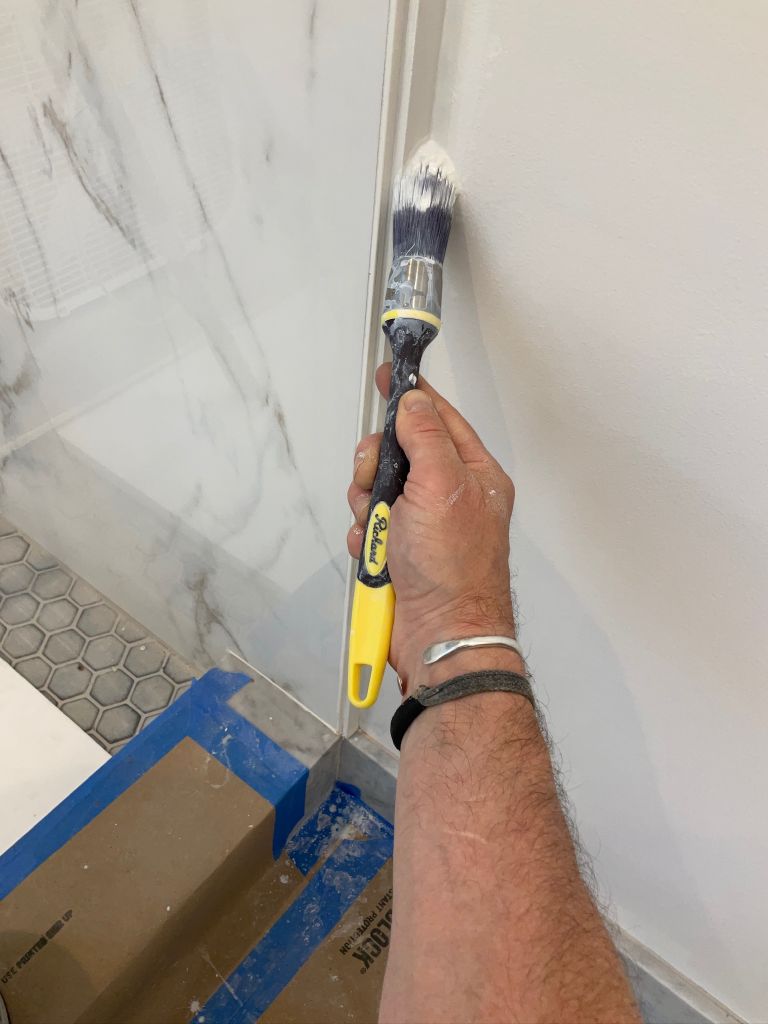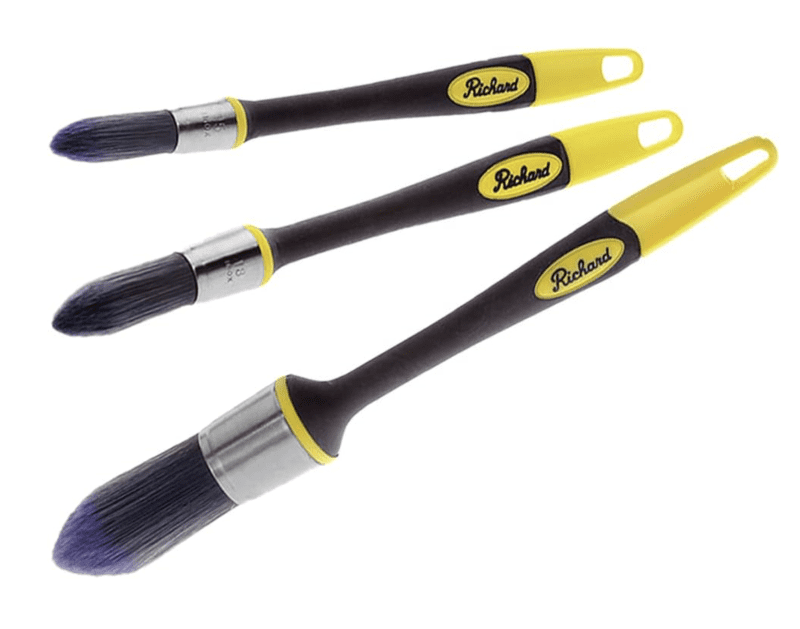Cutting in can be painstaking and a royal pain if you aren’t using the best paint brush for cutting in crisp lines. I’ve tried many paint brushes over the years, and my favorite is the A Richard Edge Painting Tool. Here’s why.
Top-Line Points
- Best paint brush for cutting in I have ever used
- If I had to give this an X out of 10 point rating, I’d give it a 35
- Increased production 100%
- Increased quality–dependably straight lines 50%
- Decreased physical output 50% over conventional brushes
- Outstanding bristles and handle design
- Holds a good amount of paint for its size
Why is it the best paint brush for cutting in?
I’m a remodeler who, for better or worse, paints my own projects. Whether that’s a house I’m flipping and I want the money in the sale to go to me and not a painter or a bathroom remodel that’s just too small and on too tight a timeline to wait to get on a painter’s schedule, I usually dispense with the coordination and paint myself. I also hate being on two jobs at the same time. INVARIABLY a tool gets left at Job 1 you didn’t think you’d need on Job 2.
I don’t like it, but I do it. It’s all forward progress and maximum profit to me.
Truth be told, I’m a B, maybe B+, pro painter, same with its related art form: drywall. And there are two phases of my painting life: Before discovering the A Richard Edge Painting Tool and after.
Check out our favorite paint tools and supplies!
Yeah, it’s that good.
I used 2- and 3-inch angled paint brushes for all my cutting in. “Cutting in” is what painters call the no-tape method of painting between surfaces. Wall to ceiling and then wall to chair rail. Shoe molding to floor, and so on. I can do it with a 3-inch brush, but it is painful.
With a A Richard (they’re French Canadian, it’s A ree-shard) brush, it is still painful because it is not a pressure treated deck building or a feature wall, but the brush works so elegantly well, it’s almost a joy to do what I don’t like doing.
Before I get all the way in the weeds on this, one thing matters: Painting for me is a sequenced event. I paint all the trim first. I over paint it onto the walls and ceilings, just ¾-inch or so. This does three things: It gets the trim painted as quickly as possible, it seals the caulk bead, it sets me up to paint a wide surface into a slim surface–much easier than laser beaming 3/16-inches of trim into 8-feet of wall.
“Cutting in” is what painters call the no-tape method of painting between surfaces.
Let’s talk details about the best paint brush.
This brush’s tear drop design enables me to “draw” paint on the wall as if this thing was a giant Sharpie.
I dip the bristles in the can about ½-inch, screed a little off as I take it out of the can, then “load” the wall, meaning I squiggle out some paint a few inches away from the line I’m painting. We’ll use that later.
With the remaining paint in the brush, I work the line. It’s impossible to explain, but you’ll figure it out. With just a little pressure and the right angle of the handle, the bristles flare just so and dispense paint in a perfect flow until the brush is empty. Rinse. Repeat. Go fast.
On multi-level surfaces like cove molding I use for shoe molding or the batten I show here for transitioning from tile to wall cladding, I can split the bristles and dispense paint evenly and accurately. AKA: painting like a boss.
What else do you need to know?
Every other brush I’ve used—no matter if I unload it on the wall or not—piles up paint, has bristles wander, is too unrefined for this refined movement.
If I had to give A Richard Edge Painting Tool an X out of 10-point rating, I’d give it a 35. (It’s really the best paint brush I’ve ever used.)
I like the 1-inch tool for general cutting in. Since I’m cutting the large into the small. But I’ve found the ¾-inch tool useful in certain situations, too. It’s good to have options.
After cleaning the brush, make sure to “whip” the brush dry. A little water/paint stays in the bristles and will eventually dry solid and/or leak back out during your next use.
Bottom Line: Best paint brush
If you want to put speed and quality on the track while reducing effort for an incredibly good price, A Richard Edge Painting Tool is a before and after situation.
Check out our favorite paint tools and supplies!



